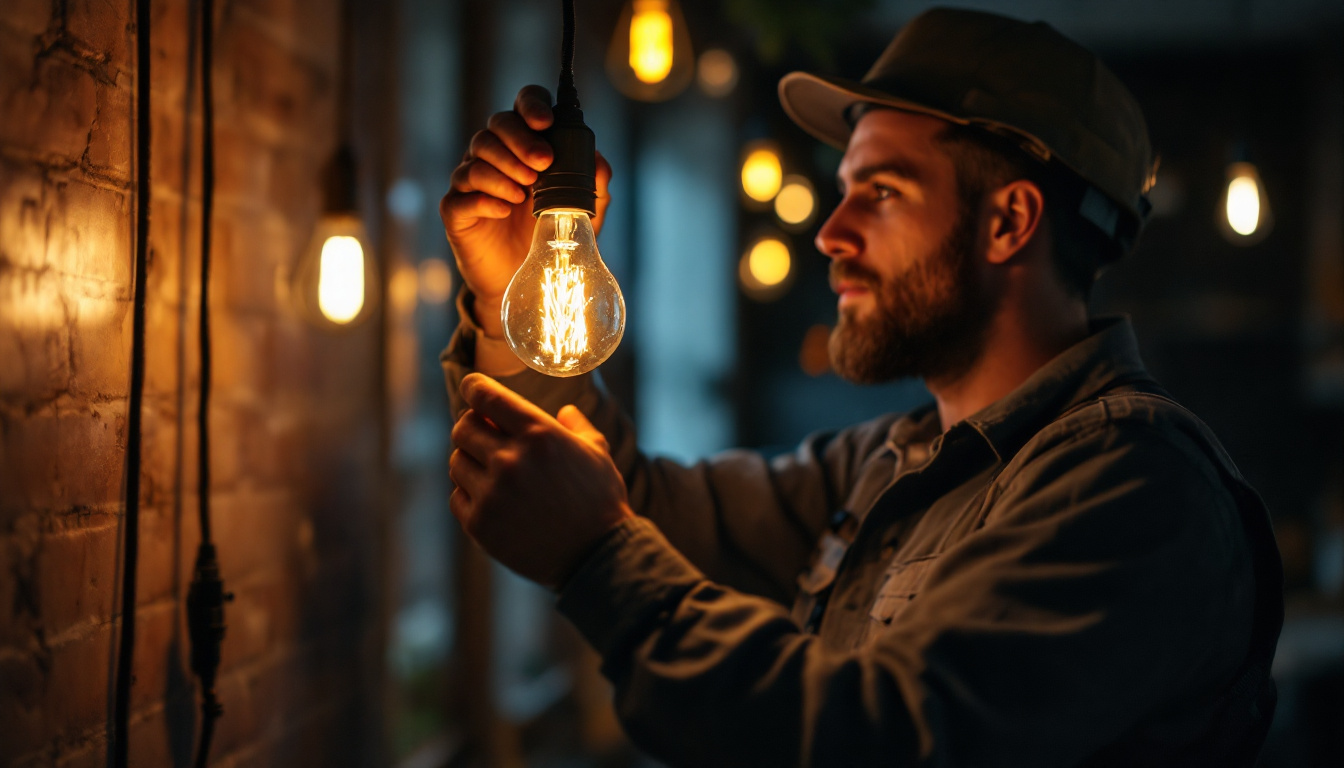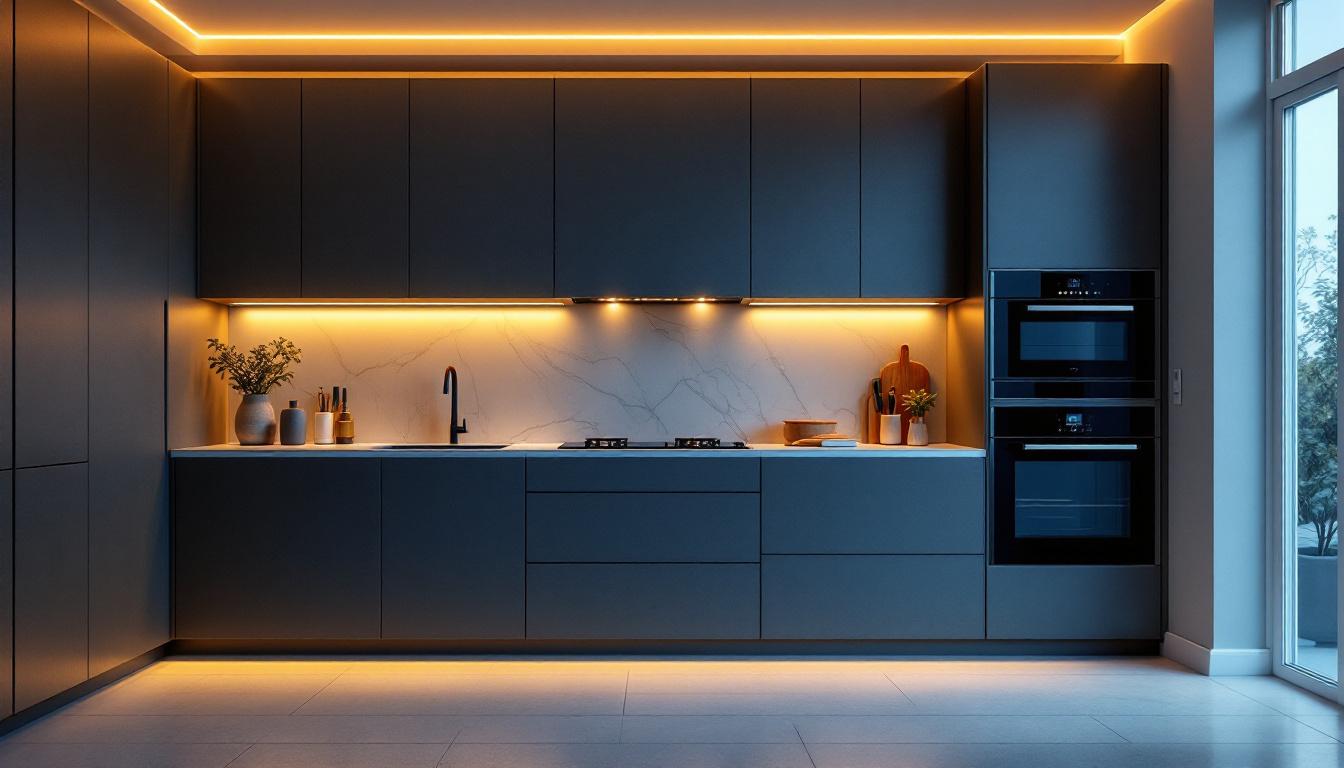
The evolution of the light bulb has significantly influenced the field of electrical contracting, especially for lighting contractors. As the first invented light bulb paved the way for modern lighting solutions, understanding its history and the best practices for implementation can enhance the effectiveness and efficiency of lighting projects. This article delves into the best practices that lighting contractors should adopt, ensuring they remain at the forefront of the industry.
To appreciate the advancements in lighting technology, it is essential to understand the historical context of the first light bulb. The initial designs were rudimentary, primarily focusing on creating a reliable source of light. Over time, innovations in materials and technology led to more efficient and longer-lasting bulbs. The journey began in the early 19th century when inventors like Humphry Davy first demonstrated the electric arc lamp, which, although bright, was impractical for everyday use due to its high energy consumption and short lifespan. This early experimentation laid the groundwork for future developments, culminating in Thomas Edison’s successful creation of a practical incandescent bulb in 1879.
Lighting contractors benefit from grasping this evolution, as it provides insights into the principles of light production and energy efficiency. This knowledge can inform their approach to selecting and installing lighting solutions that meet modern standards and client expectations. Furthermore, understanding the historical context allows contractors to appreciate the regulatory changes and energy standards that have emerged over the years, shaping the landscape of lighting technology. For instance, the transition from incandescent to compact fluorescent lamps (CFLs) and now to light-emitting diodes (LEDs) reflects a broader commitment to sustainability and energy conservation, which is increasingly important to consumers today.
The journey of light bulb development is marked by various inventors and their contributions. From the early experiments with incandescent bulbs to the introduction of fluorescent and LED technologies, each phase has brought new challenges and opportunities. Understanding these developments allows contractors to make informed decisions about which lighting solutions to offer their clients. The introduction of fluorescent bulbs in the 1930s, for example, revolutionized the industry by providing a more energy-efficient alternative to incandescent bulbs, significantly reducing electricity consumption in commercial settings. Similarly, the advent of LED technology in the 21st century has further transformed lighting, offering unparalleled longevity and efficiency, which has become a selling point for many contractors.
Moreover, being knowledgeable about the history of lighting can enhance a contractor’s credibility. Clients often appreciate working with professionals who can explain the benefits of different lighting technologies and their historical significance. This depth of knowledge not only fosters trust but also empowers contractors to engage in meaningful conversations about the future of lighting, including smart lighting systems that integrate with home automation technologies. As the industry continues to evolve, staying informed about the latest trends and historical milestones will enable contractors to provide tailored solutions that not only meet the immediate needs of their clients but also align with broader societal shifts toward sustainability and innovation in energy use.
As lighting contractors navigate their projects, several key considerations can guide their practices. These considerations encompass technical, aesthetic, and environmental aspects that are crucial for successful installations.
Technical proficiency is paramount for lighting contractors. Understanding the electrical requirements, compatibility of different lighting types, and installation techniques is essential. This knowledge not only ensures safety but also enhances the overall quality of the lighting system.
Contractors should stay updated on the latest technologies and installation techniques. Regular training and professional development can equip contractors with the skills needed to tackle complex projects and troubleshoot potential issues effectively. Furthermore, familiarity with smart lighting systems and automation can set a contractor apart in a competitive market, allowing them to offer innovative solutions that cater to modern client demands.
Lighting is not merely functional; it significantly impacts the aesthetics of a space. Contractors must consider how different lighting styles, colors, and intensities can enhance the overall design of a room. Collaborating with interior designers or architects can lead to more harmonious installations that meet the client’s vision.
Moreover, understanding the psychology of lighting can help contractors create spaces that evoke desired emotions and atmospheres. For instance, warm lighting can create a cozy environment, while cooler tones may promote productivity in workspaces. The strategic use of accent lighting can also highlight architectural features or artwork, adding depth and character to a space. By paying attention to these nuances, contractors can elevate their projects from mere installations to thoughtfully designed environments that resonate with users.
In today’s world, the environmental impact of lighting solutions cannot be overlooked. Lighting contractors should prioritize energy-efficient options, such as LED bulbs, which consume less energy and have a longer lifespan compared to traditional incandescent bulbs. This not only benefits the environment but also reduces energy costs for clients.
Additionally, contractors should be aware of local regulations regarding energy efficiency and sustainability. Compliance with these regulations not only enhances a contractor’s reputation but also positions them as a responsible choice for environmentally-conscious clients. Beyond compliance, contractors can advocate for sustainable practices by incorporating daylight harvesting techniques and utilizing renewable energy sources, such as solar-powered lighting. By doing so, they not only contribute to a greener planet but also educate clients on the long-term benefits of sustainable lighting solutions, fostering a culture of environmental responsibility within the industry.
Effective installation practices are crucial for ensuring the longevity and performance of lighting systems. Following best practices can help contractors deliver high-quality results that satisfy client expectations.
Before beginning any installation, thorough planning and design are essential. Contractors should assess the space, considering factors such as natural light sources, room dimensions, and the intended use of the area. This assessment informs decisions about the type and placement of lighting fixtures.
Creating a lighting plan that outlines fixture types, locations, and wiring requirements can streamline the installation process. It also serves as a valuable reference for future maintenance or upgrades.
Using high-quality materials and fixtures is a fundamental best practice for lighting contractors. Investing in reputable brands ensures that the products are durable and reliable, reducing the likelihood of failures and callbacks. Clients appreciate the value of quality installations, leading to higher satisfaction and potential referrals.
Furthermore, contractors should educate clients about the benefits of various fixtures, helping them make informed choices that align with their preferences and budgets.
Safety should always be a top priority for lighting contractors. Adhering to local electrical codes and safety standards is not only a legal requirement but also essential for protecting clients and their properties. Contractors must ensure that all installations are performed safely and that any necessary permits are obtained.
Regularly reviewing safety protocols and conducting risk assessments can help identify potential hazards before they become issues. This proactive approach fosters a culture of safety and professionalism within the contracting team.
Effective communication with clients is a cornerstone of successful lighting contracting. Keeping clients informed throughout the process fosters trust and ensures that their expectations are met.
At the outset of a project, contractors should set clear expectations regarding timelines, costs, and the scope of work. This transparency helps prevent misunderstandings and builds a positive working relationship. Clients appreciate knowing what to expect, which can lead to a smoother project experience.
Regular updates during the installation process can also keep clients engaged and informed. This communication can involve discussing any challenges that arise and how they will be addressed, reinforcing the contractor’s commitment to quality and customer satisfaction.
Once the installation is complete, educating clients on the proper maintenance of their lighting systems is essential. Providing guidance on bulb replacement, cleaning fixtures, and optimizing energy efficiency can extend the lifespan of the installation and enhance its performance.
Offering maintenance services or check-ups can also be a valuable addition to a contractor’s offerings. This not only ensures that the lighting system remains in optimal condition but also provides an opportunity for ongoing client engagement.
The lighting industry is continually evolving, with new technologies emerging regularly. Lighting contractors must embrace these advancements to remain competitive and offer the best solutions to their clients.
smart lighting solutions are becoming increasingly popular among homeowners and businesses. These systems allow for remote control, automation, and customization of lighting settings, providing convenience and energy savings. Contractors should familiarize themselves with smart lighting technologies and their installation requirements.
By offering smart lighting options, contractors can appeal to tech-savvy clients looking for modern solutions that enhance their living or working environments.
Incorporating energy management systems into lighting projects can further enhance energy efficiency. These systems monitor and control energy usage, helping clients reduce costs and minimize their environmental impact. Contractors should consider integrating these systems into their offerings, providing added value to clients.
Staying informed about the latest energy management technologies can position contractors as experts in energy efficiency, attracting clients who prioritize sustainability.
The journey from the first invented light bulb to today’s advanced lighting solutions reflects the dynamic nature of the industry. For lighting contractors, understanding this evolution and implementing best practices can significantly enhance their effectiveness and reputation.
By focusing on technical proficiency, aesthetic integration, environmental impact, and effective communication, contractors can provide exceptional service that meets the diverse needs of their clients. Embracing technological advancements and prioritizing safety will further solidify their position as leaders in the lighting contracting field.
Ultimately, the best practices outlined in this article serve as a roadmap for lighting contractors seeking to excel in their profession, ensuring that they not only meet but exceed client expectations in every project.
As you strive to exceed client expectations and lead the way in the lighting industry, LumenWholesale is here to support your journey. Our commitment to providing top-quality, spec-grade lighting products at unbeatable wholesale prices ensures that you can implement the best practices discussed with confidence. With our extensive selection that meets the highest industry standards, you can trust that your lighting solutions will be reliable and high-performing. Take advantage of our hassle-free bulk buying and free shipping to get premium lighting at the best value. Elevate your lighting projects by choosing Wholesale Lighting at the Best Value with LumenWholesale, where quality, affordability, and convenience come together.

Discover the ultimate guide to choosing the best garage LED lighting for your projects.

Explore the rising significance of recessed under cabinet lighting in modern design.

Discover the fascinating history of the tools that revolutionized lighting with the invention of the light bulb, and explore how modern lighting contractors can leverage these innovations to enhance their projects and services..

Discover the top strategies lighting contractors use to transform basements with LED lights.